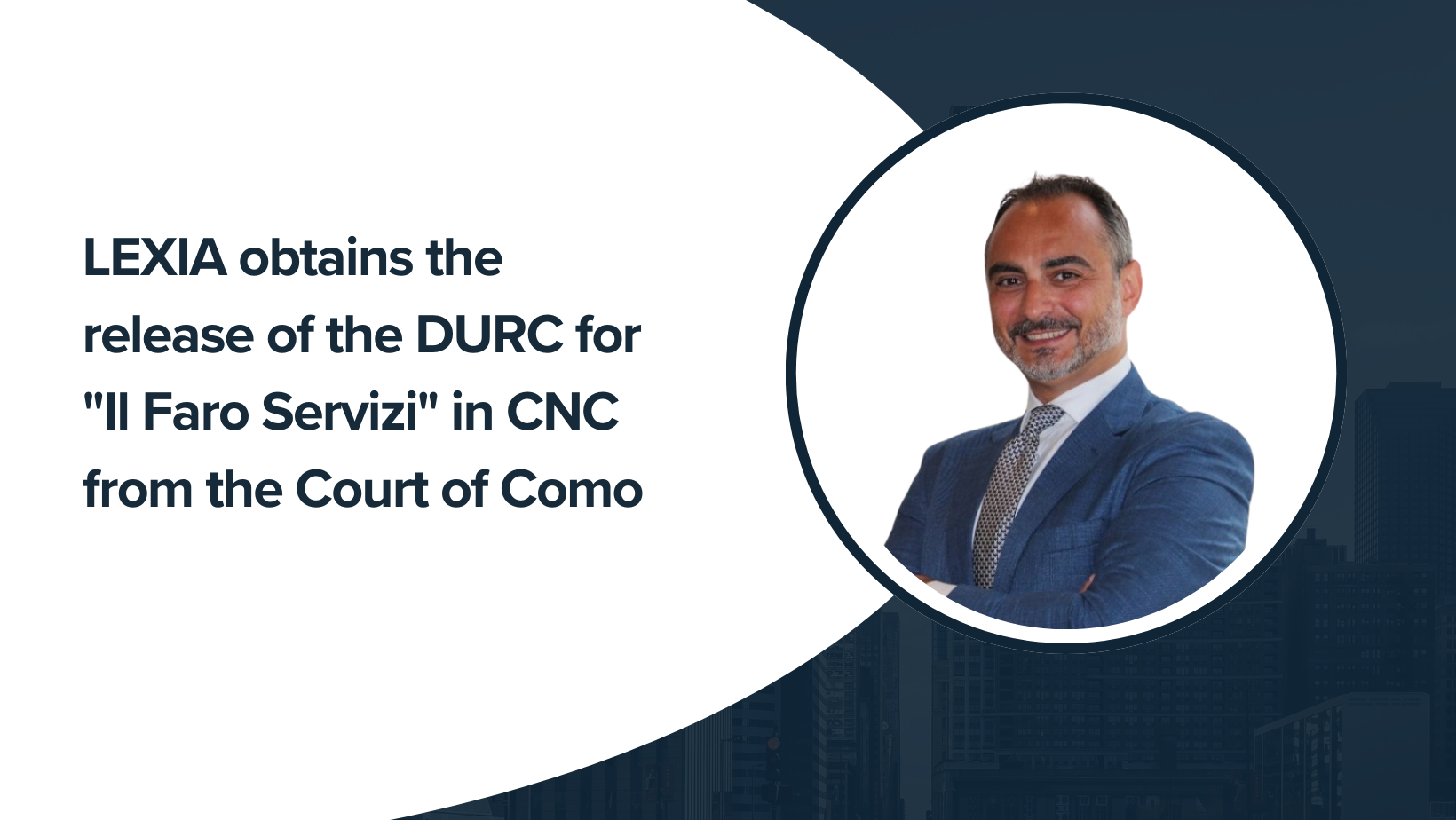With ruling No. 3450 of January 11, 2025, the Italian Supreme Court clarified, through an important decision, the concept of “expired debt,” placing it within the specific legal issue presented in the case. Specifically, the Court ruled that the bankruptcy clawback action under Article 67, paragraph 1, No. 4, of the Italian Bankruptcy Law (now Article 166 of the Business Crisis and Insolvency Code – C.C.I.I.), which applies to guarantees provided for an expired debt, also extends to cases where guarantees were granted for a debt that was initially expired but later renegotiated between the parties through a repayment plan.
The Supreme Court established that the mere stipulation of a repayment (or restructuring) plan between debtor and creditor does not exclude the fact that the debt is expired; rather, such a credit would no longer be considered immediately enforceable until the newly agreed payment deadline. The ruling, issued within the framework of bankruptcy law, is also particularly useful when applied, mutatis mutandis, to the provisions of the currently valid Business Crisis and Insolvency Code.
Case background
The case originated from an appeal filed by a creditor before the Milan Tribunal, challenging the enforceability decree of the list of admitted claims for a company subject to the Extraordinary Administration procedure for large enterprises in crisis, through an opposition claim under Article 98 of the Italian Bankruptcy Law (now Article 206 C.C.I.I.), as explicitly referenced by Article 53 of Legislative Decree No. 270 of July 8, 1999.
In the contested list of admitted claims, the delegated judge, based on the receiver’s indications, ruled the revocability under Article 67, paragraph 1, No. 3, of the Italian Bankruptcy Law of the mortgage registration—thereby making it ineffective in the insolvency proceedings—since the creditor had registered the mortgage within the year preceding the insolvency declaration. Consequently, the credit was admitted solely as an unsecured claim.
The creditor, in its appeal, argued that the failure to recognize the mortgage privilege on its credit was incorrect, asserting that, since the mortgage was granted for an expired debt, the applicable rule should have been Article 67, paragraph 1, No. 4, of the Italian Bankruptcy Law, which applies to mortgages created within six months before the insolvency declaration and concerning pre-existing expired debts.
The opposition to the list of admitted claims was subsequently rejected by the Milan Tribunal, which, by decree, ruled that the act establishing the mortgage privilege was revocable under Article 67, paragraph 1, No. 3, of the Italian Bankruptcy Law. Essentially, the court maintained that the debt had not yet expired at that time, as a “repayment agreement” had been entered into, and thus, “the debts were not overdue.”
The opposition judge did not consider that, for the purpose of the mortgage’s revocability, it should be considered constituted upon its registration in the property registers and not upon the granting act itself, which was only effective inter partes. According to the Tribunal, the mortgage had been granted to secure a pre-existing but non-expired debt, as the renegotiation of payment terms (with a consequent modification of the original deadline) had rendered the effects of the prior default legally irrelevant.
As a result, the Tribunal concluded that the debt in question should be considered not expired due to the repayment agreement. To support this argument, it was documented that, at the time of the mortgage registration, the company had already defaulted on the repayment agreement as well.
Dissatisfied with the ruling, the creditor appealed to the Supreme Court, arguing that the lower court had erred in its interpretation of Article 67 of the Italian Bankruptcy Law. Specifically, the creditor contended that (i) the debt had already expired at the time of the mortgage registration, and thus, the applicable provision should have been Article 67, paragraph 1, No. 4, regardless of any repayment agreement; (ii) alternatively, the relevant date for determining the suspect period should have been the date of the mortgage agreement, rather than the date of registration, since the latter merely executed the prior agreement; and (iii) in further alternative, the lower court had failed to consider a decisive fact—namely, that if the new deadline granted through the repayment plan meant the debt was no longer expired, the agreement itself should have been viewed as part of a broader restructuring arrangement tied to the mortgage guarantee.
The Supreme Court’s decision
Upon review of the appeal, the Supreme Court ruled in favor of the creditor, overturning the lower court’s decision.
The key reasoning was that a pre-existing debt cannot be considered as non-expired simply because an extension for repayment was granted. Rather, for the purposes of Article 67, paragraph 1, No. 4, what matters is whether the debtor was already in default at the time the mortgage was granted, regardless of any later payment extension.
As a result, the applicable rule was not Article 67, paragraph 1, No. 3, but rather paragraph 4 of the same article, which allows for the clawback—and consequent unenforceability against creditors—of guarantees established within six months before the insolvency ruling. In this case, the mortgage had been granted before the suspect period.
To further clarify the concept of an expired debt, the Court stated that, at the time the repayment agreement was signed, the original payment deadline had already passed. Therefore, the debt was already legally enforceable, and the subsequent repayment extension was granted precisely in exchange for the mortgage guarantee, forming a single, unified transaction.
Additionally, the Supreme Court addressed how this interpretation aligns with the suspect period calculation. In contrast to the voluntary granting of a mortgage, where the relevant date is typically the registration in the property records, the applicable date for clawback actions should instead be the date of the mortgage agreement itself.
In conclusion, the Supreme Court annulled the contested ruling and remanded the case to the Milan Tribunal for reconsideration, issuing the following legal principle:
„In the context of bankruptcy clawback actions, when a guarantee (such as a mortgage) is granted to a creditor after the original payment deadline has already passed, the debt must be considered expired for the purposes of Article 67, paragraph 1, No. 4, of the Italian Bankruptcy Law. The granting of a repayment extension is irrelevant when it is directly linked to the establishment of the guarantee, forming a single, unified transaction.“





